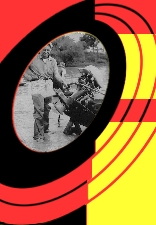 |
 |
History of Todd Booth's Collection
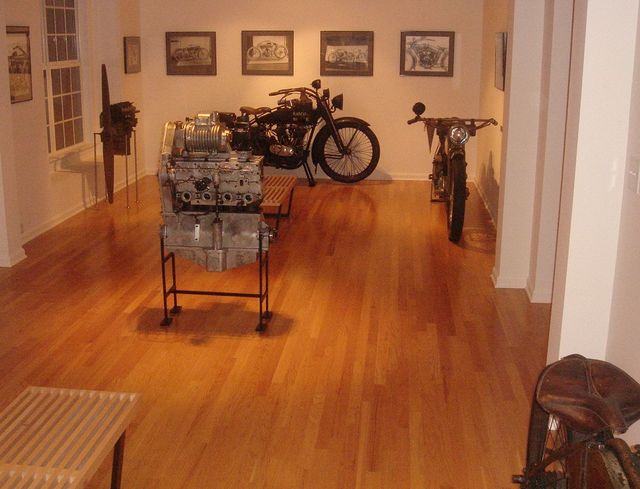 |
I began my collecting in 1990. As you saw from the listing of my collection the only real theme is that I acquire only those pieces that are significantly important from an engineering point of view. Motorcycles, outboards, snowmobiles and other engines of various types...all these items had milestone events in their evolution as successful consumer and/or racing products. It is these milestone events that I strive to capture in my collection. Todd Booth
|
1930 OMC Model 176 Speedy-Bee
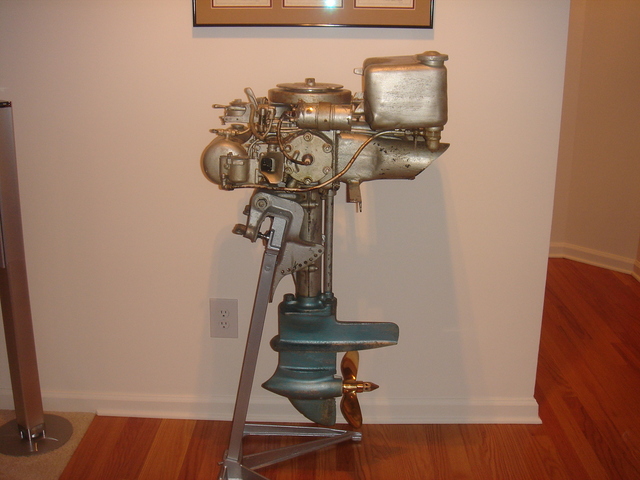 |
I have a 1930 OMC Model 176 Speedy-Bee outboard. I looked at my engine closely and cannot find a serial number. The history of my motor is that it was raced by Edwin Townsend of Westwood Massachusetts, where he lived for 55 years. Mr. Townsend raced B-Class and D-Class. Mr. Townsend also raced sprint cars and flew airplanes from a young age. It is said that Mr. Townsend worked as a welder at the Quincy Shipyard in Quincy, Massachusetts. This motor was acquired from his daughter. Thank you, Todd Booth
|
1930 OMC Model 176 Speedy-Bee (2)
1930 Skinner
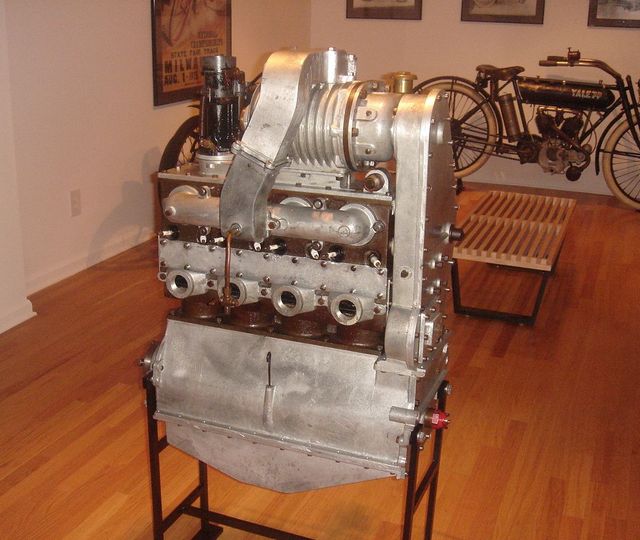 |
Imagine this...4 cylinder, 2 stroke, supercharged and rotary valve. Yes, rotary valve...four of them!
This engine was designed and built by Mr. Skinner in the New England area during 1928-1929. The engine mounts and bell housing mounts are common to a Ford Model A. I have learned that this engine didn't have success in auto racing due to cooling challenges and was later used with better success (and cooling) in a race boat.. The engine was acquired together with the complete set of beautifully constructed wood patterns for sand casting.
|
1930 Skinner (part 2)
| |
Interesting Technical Features:
1)water cooled cylinder block and head is cast as one unit from grey iron; 2)upper crankcase, oil pan, front chaincase and manifolds are aluminum sand castings;
3)supercharger is by Switzer-Cummins of Indianapolis, Indiana; 4)carburetor is a downdraft Stromberg; 5)cylinder head is machined to run two spark plugs per cylinder; 6)exhaust vents to atmosphere at BDC out the right and left side of engine (eight exhaust pipes); 7) although the engine is two cycle, there are no transfer ports; 8)whereas most four cylinder engines have a firing order of 1, 3, 4, 2 this engine has a firing order of 1, 4, 2, 3; 9)crankshaft big end journals are at 90 degrees to each other, counterweights are knife-edged and there are five pressure-fed main bearings; 10)pistons are flat top with three compression rings each (no oil ring); 11)each of the four rotary valves are shaped like a shot glass, only about twice as tall.
|
Quarter Scale McCormick Model Engine
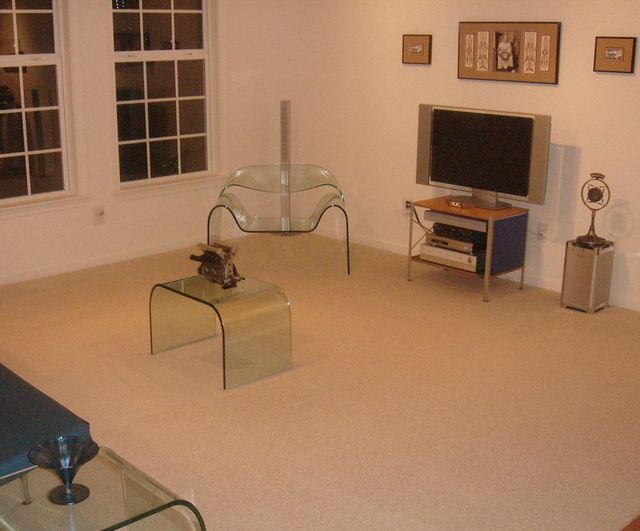 |
If you look on the coffee table in the room, you will see a model engine. This engine was built by Mr. McCormick likely in the 1940s or early 1950s. It is a working quarter scale four cylinder DOHC Miller (or Offenhauser) race engine.
|
Quarter Scale McCormick Model Engine (2)
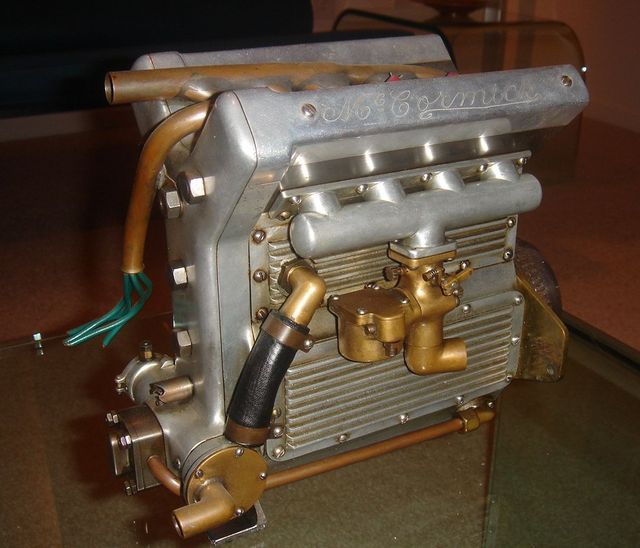 |
This beautifully constructed original/unrestored model engine features:
(1) spark ignition with points and distributor (not glow plugs); (2)gear driven double over head camshafts; (3) oil pump; (4) water pump; (5) float type carburetor; (6) crank end starting coupler (hand crank); (7) megaphone; (8) exhaust; (9)dual crankcase breathers.
|
Quarter Scale McCormick Model Engine (3)
1910 Prototype Diesel Engine
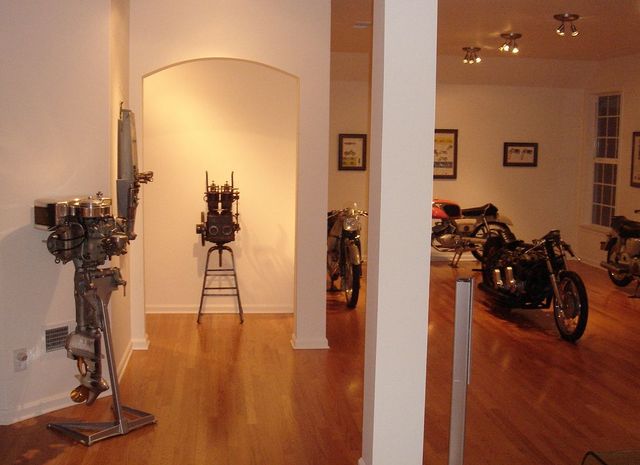 |
1910 Prototype Diesel Engine: This engine is thought to be attributed to the famous German inventor Max Kohl although there are no markings to confirm this. Quality throughout is exceptional with many interesting features:
(1) twin cylinder with 2.5" bore and 4" stroke, (2) highly detailed jacketed cylinders and heads, (3) brass and copper manifolds, (4) finely crafted fasteners, cylinder head nuts and cam stanchions, (5) overhead brass priming cups, (6) adjustable roller rocker arms with integrated adjustable injectors, (7) injectors are integral with the valve bodies, (8) crankshaft gear driven externally to camshaft, (9) twin exhaust stacks. The engine was last run in 1998.
|
1971 Arctic Cat King Kat 800/4
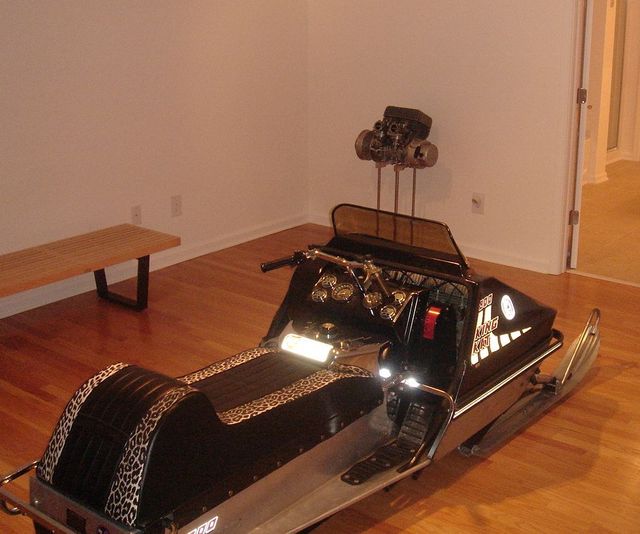 |
Back in 1969-1971 snowmobile business was at its peak. There were more than 50 manufacturers in America and yearly production of sleds exceeded 425,000 per year. Factory racing teams were common among the major manufacturers and Arctic Cat was a big player. Arctic Cat introduced a massive Hirth 793cc free-air (air cooled) triple in 1970 that concerned the snowmobile racing governing body about an escalating horsepower war. As a reaction, the United States Snowmobile Association imposed a limit of 800cc for 1971.
Arctic Cat had just established an exclusive agreement with Kawasaki to use their engines for 1971. At the Ironwood, Michigan race, Arctic Cat shocked everyone by unveiling the King Kat 800/4. The King Kat was essentially two 400cc twins on a common crankcase and common crankshaft; so much so that there are two separate CDI boxes and two separate kill switches. The King Kats finished 1st and 2nd and were immediately protested for being "factory specials". Indeed, Arctic Cat proved that they made (124) 800/4 sleds to meet the minimum 100 unit homologation rule. Unamused by the King Kat, the USSA banned the 800 class in 1972 deeming the machines "too big, too fast and too dangerous.
|
1971 Arctic Cat King Kat 800/4 (2)
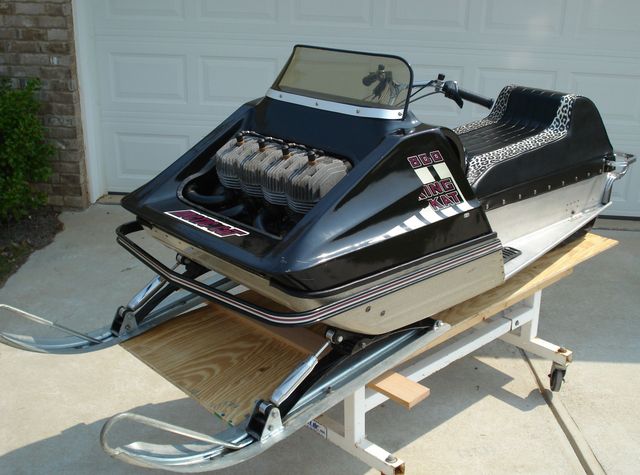 |
The King Kat 800/4 is the pinnacle of vintage snowmobile collecting; much like a hemi 'Cuda is in car collecting circles. Many have heard the legend of the King Kat but few have actually seen one. The aluminum chassis is much wider than a standard sled to accommodate the massive four cylinder air-cooled motor. There are four open mouth vacuum type butterfly carburetors, four separate temp gauges on the dash and four tuned expansion chambers stuffed under the front body. The fuel tank is only 2.5 gallons.
|
1971 Arctic Cat King Kat 800/4 (3)
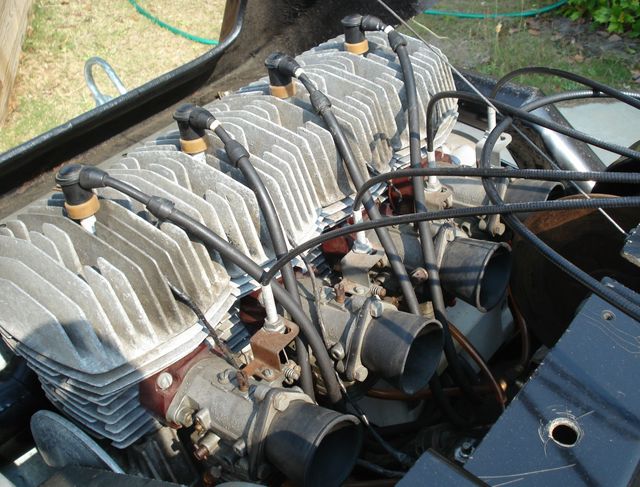 |
Although there were early racing successes and quick banning of the 800 class, the King Kat was a seriously flawed machine. It was too heavy, belts rarely lasted a single race, carbs were impossible to tune and the over-long crankshaft would wind-up like a spring and ultimately grenade the whole motor.
This sled has 152 original miles.
|
1971 Arctic Cat King Kat 800/4 (4)
|
|
